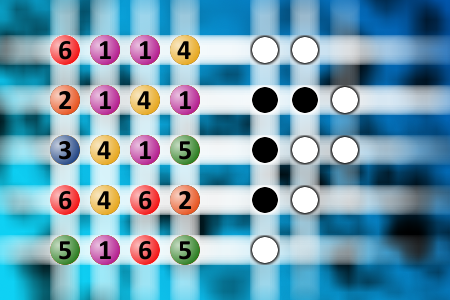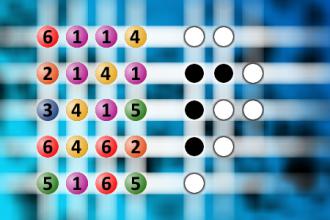Which is a winning combination of digits?
The computer chose a secret code (sequence of 4 digits from 1 to 6). Your goal is to find that code. Black circles indicate the number of hits on the right spot. White circles indicate the number of hits on the wrong spot.Correct answers: 62
The first user who solved this task is macho chesh.
#brainteasers #mastermind

A woman was sure that her husb...
A woman was sure that her husband was cheating on her, and having an affair with the maid. So she laid down a trap.
One evening she suddenly sent the maid home for the weekend and didn't tell the husband.
That night when they went to bed, the husband gave the old story: Excuse me my dear, my stomach aches, and went to the bathroom.
The wife promptly went into the maid's bed. She switched the lights off. When he came in silently, he wasted no time or words but quickly got on top of her...
When he finished and was still panting, the wife said: "You didn't expect to find me in this bed, did you?" And then she switched on the light...
"No madam," said the gardener.
One evening she suddenly sent the maid home for the weekend and didn't tell the husband.
That night when they went to bed, the husband gave the old story: Excuse me my dear, my stomach aches, and went to the bathroom.
The wife promptly went into the maid's bed. She switched the lights off. When he came in silently, he wasted no time or words but quickly got on top of her...
When he finished and was still panting, the wife said: "You didn't expect to find me in this bed, did you?" And then she switched on the light...
"No madam," said the gardener.

